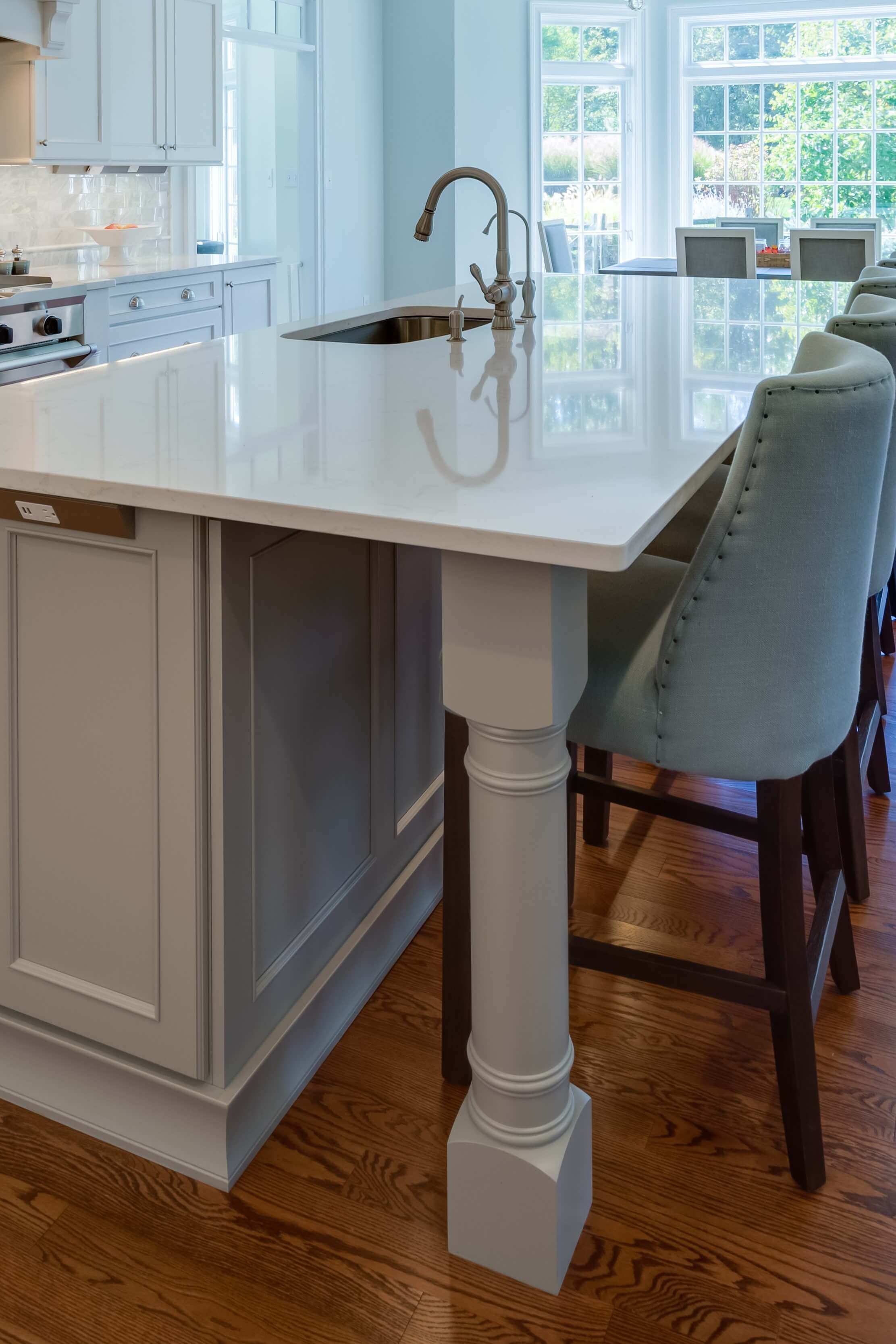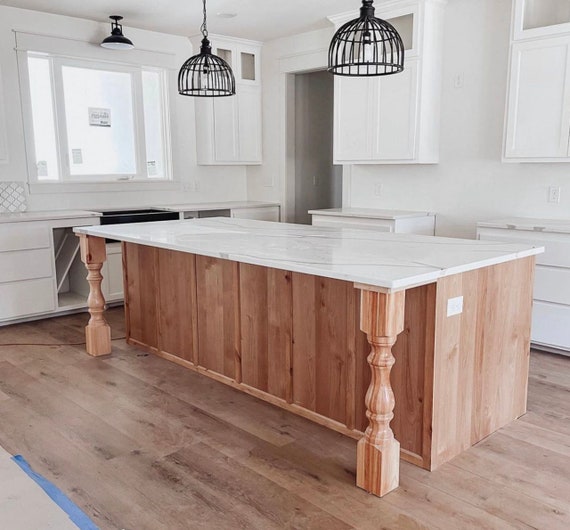Just how to Mount a Kitchen Island Leg for Optimum Stability and Design
The Importance of a Sturdy Kitchen Island Leg in Developing a Functional Cooking Area
A tough kitchen island leg serves as a fundamental part in developing a practical cooking setting, giving required support for both the counter top and numerous cooking area tasks. As kitchens advance into multifunctional areas for cooking, dining, and socializing, the option of materials and design considerations for island legs ends up being increasingly crucial.
Advantages of Sturdy Island Legs
Offering important assistance, tough kitchen area island legs play a pivotal duty in enhancing the capability and longevity of kitchen area islands - kitchen island leg. These legs not only birth the weight of the countertop and any kind of additional things put on the island, but additionally add to the total stability of the framework. A well-supported kitchen island makes certain that it stays useful and upright, also under heavy use, which is specifically important in busy kitchen settings
Furthermore, strong island legs can enhance the aesthetic allure of the kitchen. They supply a solid structure that can complement different design styles, from modern-day to standard. This flexibility allows house owners to customize their cooking area islands according to individual taste while making certain that the structural stability stays uncompromised.
In enhancement to their supportive duty, durable kitchen island legs can likewise boost safety. A steady island lowers the risk of mishaps triggered by tottering or tipping, which is specifically important in households with kids or senior individuals. Solid legs can promote a seamless circulation of tasks, allowing for efficient dish prep work and social interactions within the kitchen space. Ultimately, buying durable kitchen island legs is necessary for a useful and aesthetically pleasing cooking area.
Products for Kitchen Area Island Legs
When picking materials for kitchen island legs, sturdiness and visual allure are essential variables to take into consideration. The most usual products include hardwood, metal, and engineered timber, each offering special benefits.
Wood, such as oak, maple, or cherry, is a timeless option due to its stamina and timeless elegance (kitchen island leg). It can endure considerable weight and is immune to use, making it optimal for high-use kitchen atmospheres. Furthermore, wood can be discolored or painted to enhance numerous kitchen area styles
Metal legs, typically crafted from stainless-steel or functioned iron, provide a commercial and modern-day look. They are extremely solid and can sustain substantial loads while being resistant to wetness and warmth, which is beneficial in a cooking location. Steel legs can also be easily cleansed, improving their functionality.

Design Factors To Consider for Stability
The choice of materials for cooking area island legs directly affects the design factors to consider for stability. When making a cooking area island, it is vital to assess the weight-bearing ability of the picked products. Much heavier materials, such as solid wood or metal, usually supply higher stability, specifically under the stress and anxiety of day-to-day usage.
Additionally, the leg design have to incorporate proper geometry to boost security. A larger base raises the support area, reducing the risk of tipping or tottering. Factor to consider should likewise be offered to the height of the legs; out of proportion leg sizes can cause inequality, compromising the total look here security of the island.
Furthermore, the circulation of weight throughout the island is important. Ensuring that the leg placement straightens with the heaviest components, such as appliances and counter tops, will certainly further improve security.
Maintenance Tips for Long Life

Cleaning is one more essential facet of maintenance. Depending on the product of the legs-- whether wood, metal, or composite-- ideal cleansing methods must be used. For wood legs, a mild wipe with a suitable wood and a moist fabric cleaner will certainly aid preserve their finish. Metal legs may call for a light gloss to stop rust and preserve great site their gloss.
Furthermore, tightening up screws and screws frequently can ensure stability and stop wobbling. If the kitchen area island experiences heavy usage, consider enhancing the legs with additional brackets or sustains to improve longevity. Applying a protective surface or sealant can protect versus moisture and spots, lengthening the lifespan of the legs. By complying with these upkeep pointers, homeowners can guarantee their kitchen island legs stay useful and robust for years ahead.
Selecting the Right Leg Design
Normal upkeep guarantees that kitchen island legs stay practical and tough, yet selecting the best leg design is just as vital for both aesthetic appeals and support. The choice of leg design can dramatically influence the overall style and consistency of your kitchen.

Functionality is another essential facet. Thicker legs or those with a strong base can support much heavier countertops and devices, boosting the island's utility. Conversely, slender legs may create a ventilated look, suitable for lighter layouts yet potentially much less supportive.
Verdict
In recap, the value of tough kitchen area island legs can not be overstated in the development of a practical food preparation area. These legs provide important assistance, enhance security, and add to the overall aesthetic of the kitchen. By meticulously choosing appropriate materials and layouts, along with implementing appropriate upkeep practices, the long life and effectiveness of kitchen islands can be guaranteed. Inevitably, purchasing robust island legs is fundamental to accomplishing a secure and reliable culinary setting.
A sturdy cooking area island leg serves as a basic component in establishing a practical cooking environment, providing required Get the facts support for both the kitchen counter and different cooking area tasks.Supplying crucial assistance, strong cooking area island legs play an essential role in enhancing the performance and longevity of cooking area islands. Inevitably, spending in durable kitchen island legs is important for a useful and aesthetically pleasing cooking area.
Factor to consider must likewise be given to the height of the legs; disproportionate leg lengths can lead to inequality, compromising the overall stability of the island.
Wood legs give warmth and a classic look, while steel legs supply a industrial and modern-day feeling.